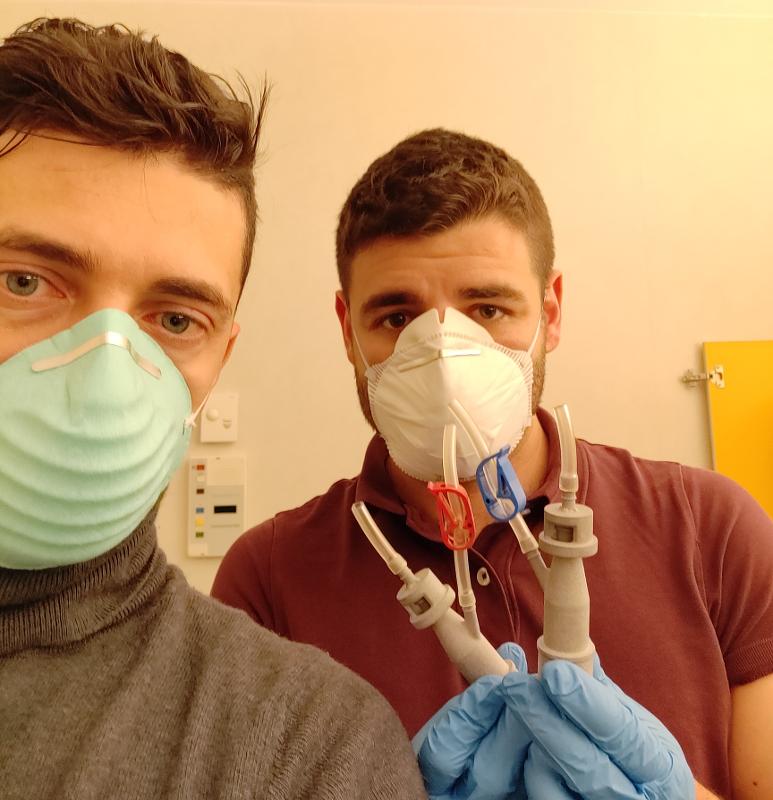It’s probably safe to say that one of the things that’s first and foremost on all our minds these days is the coronavirus pandemic. And it’s not just on our minds, but in our everyday lives that are so impacted. We may be working from home – as many of our Critical Link employees are doing – or “home schooling” our kids while school’s out for the duration, or trying to figure out how to care for elderly family members. In many areas, most stores other than supermarkets and pharmacies are closed, as are restaurants and bars. We worry and wonder about our dual concerns: health and the impact of the pandemic on the economy.
In responding to coronavirus, technology plays an important role.
We’re able to work from home, and our kids able to learn from home, thanks to telecommunications, collaboration and conferencing technology. Healthcare providers are encouraging patients to handle routine problems via telemedicine. More specifically, some countries have begun using fever-detecting goggles to identify those who may have been struck by COVID-19. Drones are being used to disinfect areas. Tech companies are stepping up to ask how they can retool their manufacturing to scale or switch to producing devices used for diagnosis and treatment.
But one of the most exciting developments – one that shows off both the entrepreneurial spirit and engineering problem-solving know-how – is from an Italian engineering startup, Isinnova.
As we all know, Italy has been hit harder and sooner than most countries, and hospitals have experienced shortages of ventilators, and the valves they use to keep the oxygen flowing to patients. So Christian Fracassi, a materials science Phd who is Isinnova’s founder and CEO , along with engineer Alessandro Romaioli, jumped in to see what they could do to help out a hospital in Chiari, where coronavirus has been hitting especially hard. They were able to reverse engineer a critical valve:
, along with engineer Alessandro Romaioli, jumped in to see what they could do to help out a hospital in Chiari, where coronavirus has been hitting especially hard. They were able to reverse engineer a critical valve:
Called a venturi valve, it connects to a patient’s face mask to deliver oxygen at a fixed concentration. The valves need to be replaced for each patient.
By Saturday evening, Fracassi had a prototype, and, the next day, he brought it to the Chiari hospital for testing. “They told us, ‘It’s good. It works. We need 100…We printed 100 of them on Sunday, and we gave all the pieces to the hospital. They are working very well.” (Source: Forbes)
There are obviously concerns about the intellectual property that belongs to the original valve manufacturer, and testing and quality concerns about 3D printed versions of a device that’s rigorously manufactured. But it’s no exaggeration to say that, with respect to the coronavirus, there’s a war on.
…the technology of 3D printing, which allows digital design of parts and the “printing” of them off a machine that creates them layer by layer, is ideally suited to emergency manufacturing because it is fast, cheap and can be done without a big factory.
The Isinnova team will be looking next to 3D printing of masks, another commodity in short supply.
Around the world, engineers are looking at ways to deploy 3D printing to help hospitals in need of essentials.
Way to go, engineers!
Overall, one silver lining aspect to the pandemic is the heartening way that so many have responded.
A final note: As you may have surmised from my last name, my heritage is Italian. So I much enjoyed seeing how, since they’re sheltering in place, so many Italians are making the best of it by standing on their balconies and singing together. Just google “Italians singing on balconies” if you need a lift. I especially enjoyed the one from Sicily, where everyone seems to own either an accordion or a tambourine!
Ciao for now – and stay safe.
